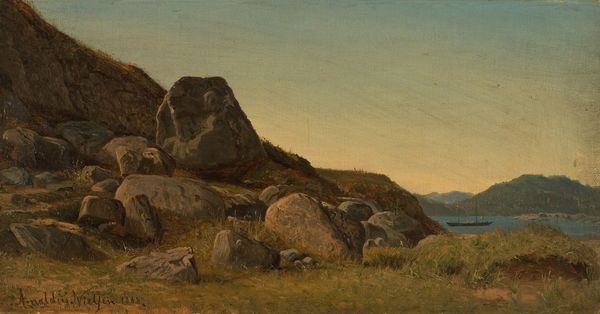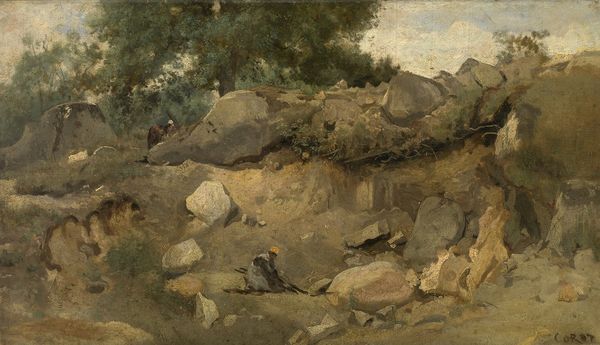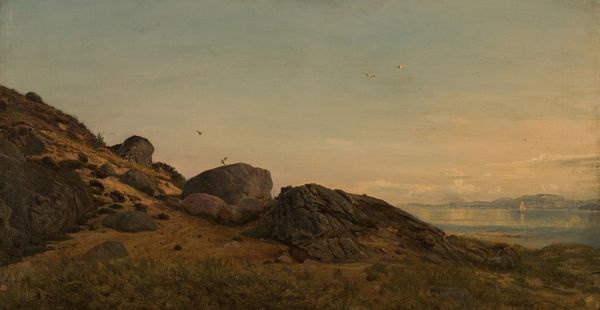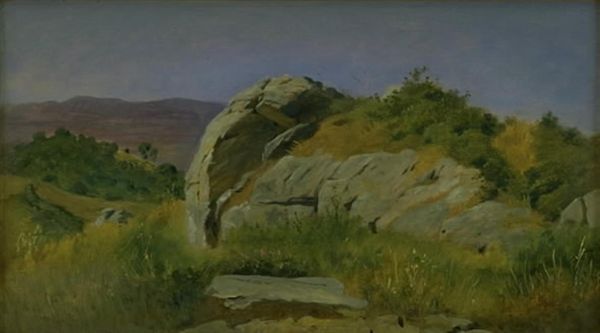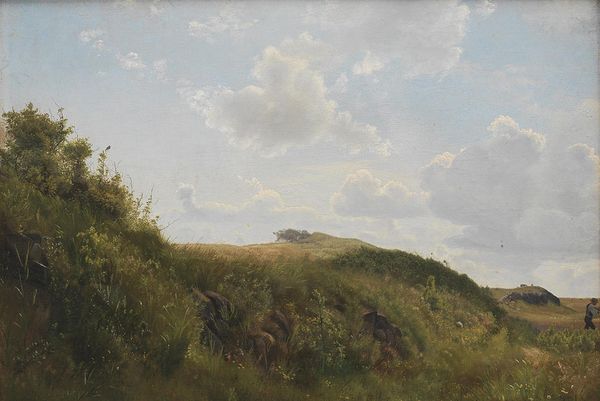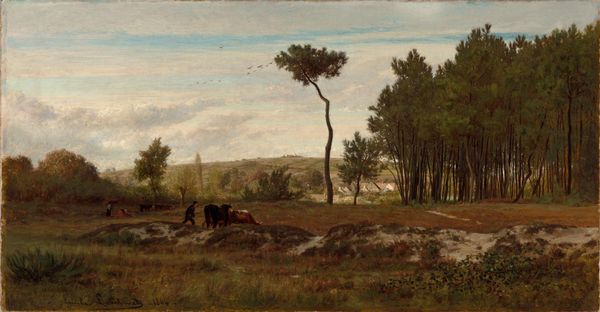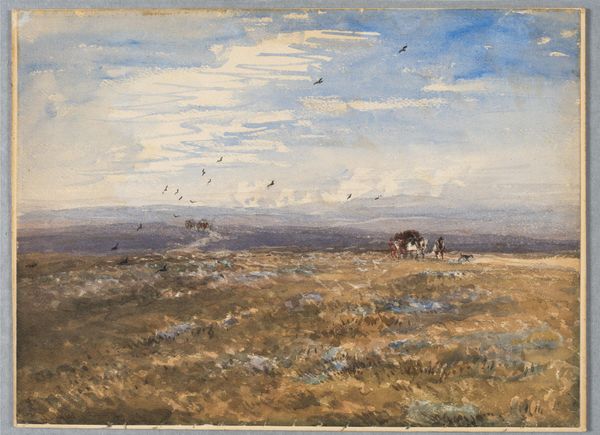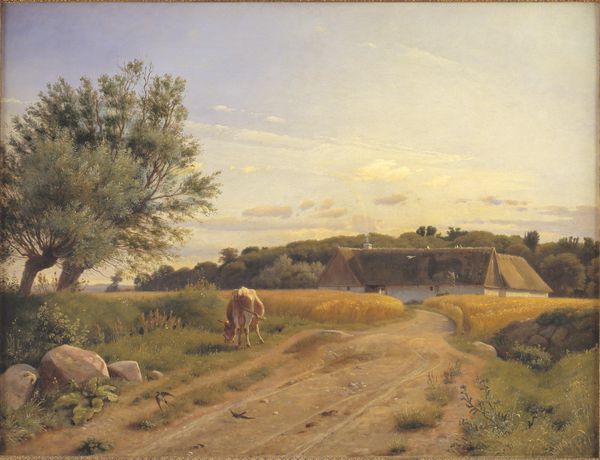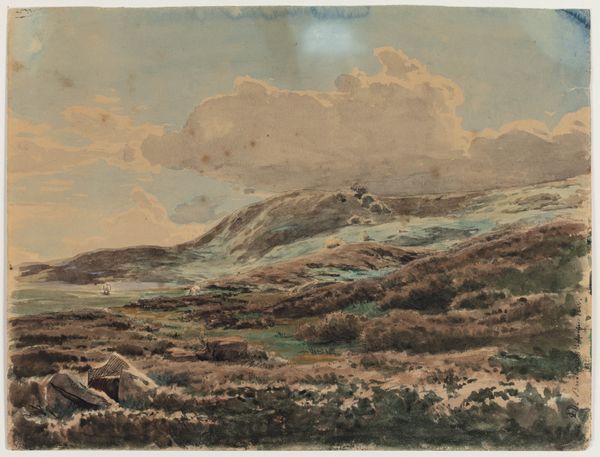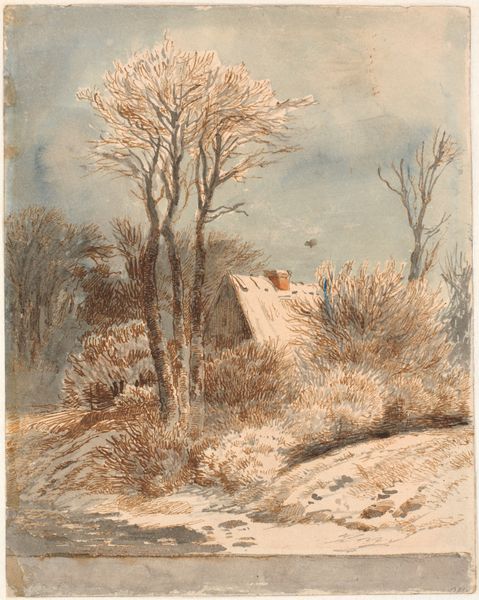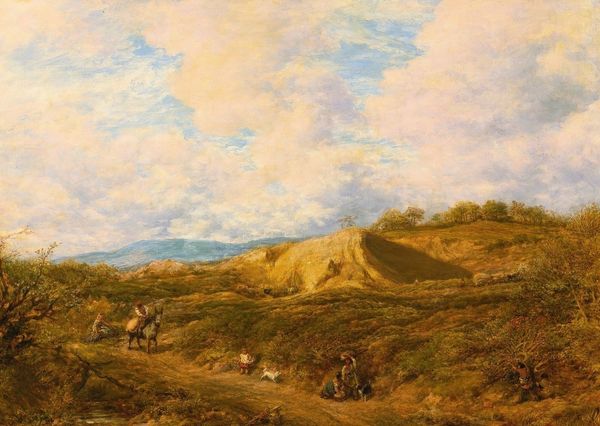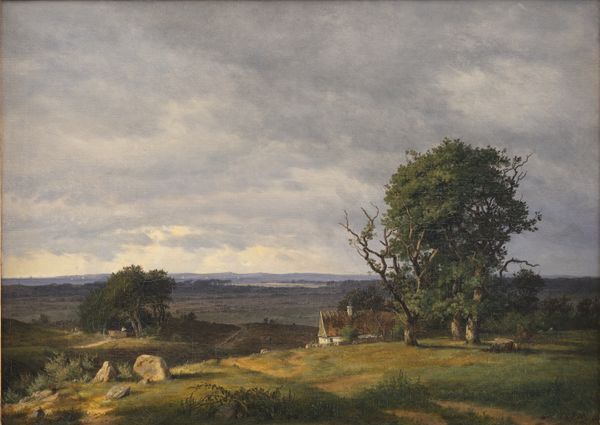
Dimensions: height 273 mm, width 227 mm
Copyright: Rijks Museum: Open Domain
Alexander Mollinger made this watercolor painting, "Hunebed," in the mid-19th century using pigments suspended in water. The choice of watercolor influences the appearance of the artwork by creating soft edges and translucent layers. The way the paint subtly blends and bleeds across the surface of the paper creates a sense of atmosphere and ephemerality, fitting for the mysterious subject matter of ancient stone monuments. The thin washes capture the nuances of light and shadow, suggesting the textures of the stones, the wispy clouds, and blades of grass in the foreground. Mollinger engaged with the tradition of landscape painting, a popular genre in the 19th century, which often idealized nature. However, the painting also engages with the social context of its time, reflecting an interest in archaeology and the romanticizing of ancient cultures. The work involved careful observation and skillful application of paint, demonstrating the artist's mastery of the watercolor medium. Paying attention to the materials, processes, and context deepens our understanding of the image and allows us to see the art in craft.
Comments
No comments
Be the first to comment and join the conversation on the ultimate creative platform.
